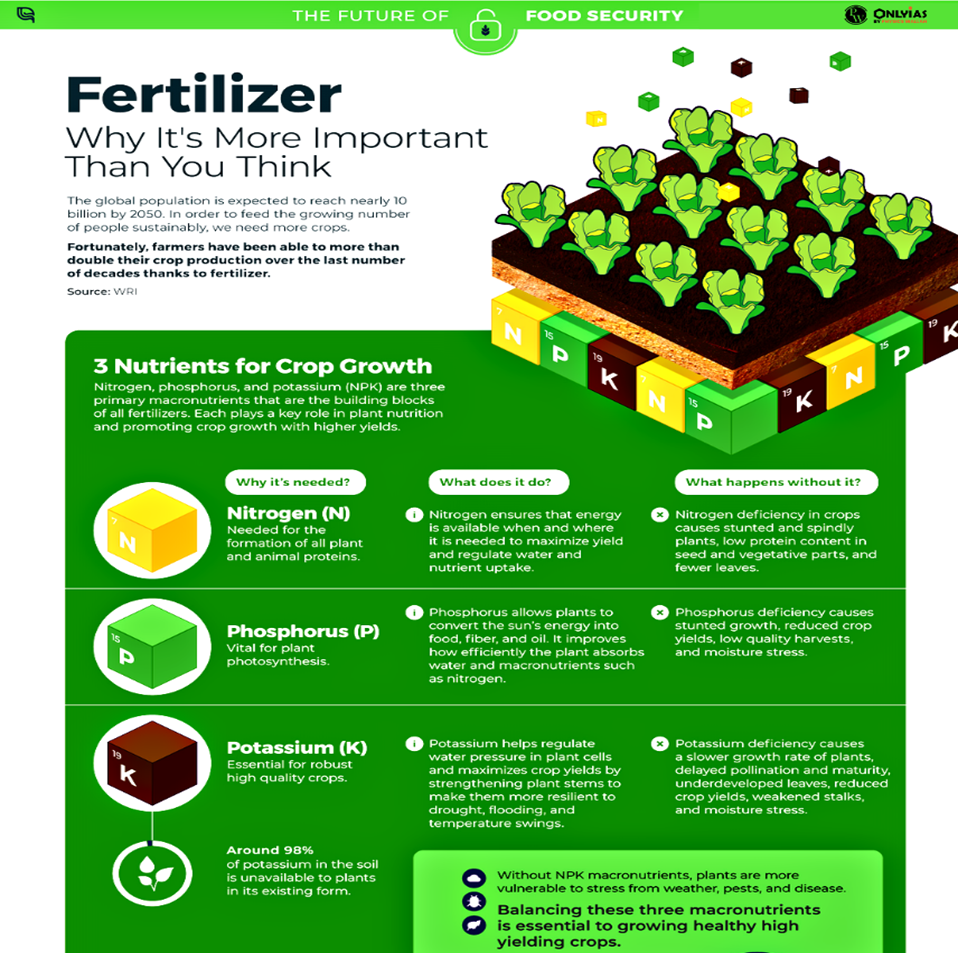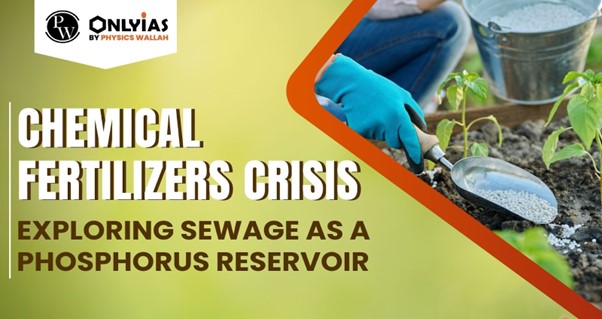Context:
| Relevancy for Prelims: Chemical fertilizers, Phosphorus based fetilizers, its uses and sources, and Green Revolution.
Relevancy for Mains: Agriculture, Challenges associated with Phosphorus based Chemical Fertilizers, Potential Strategies for Managing Phosphorus Use, Sustatanble agricultural practices, and excessive chemical fertilizer use. |
How did ancient farmers enrich soil health without chemical fertilizers?
- Historical Beginning: Early human civilizations understood the necessity of replenishing soil nutrients, however they did not use any kind of chemical fertilizers, but depleted through repeated cycles of farming and harvesting.
- Early Soil Enrichment Methods: Indigenous societies across the globe developed various methods such as utilizing leftover fish parts’ and bird excrement.
How did the Green Revolution drive chemical fertilizers adoption?
- Advancements in the 19th Century: This period witnessed progress in chemistry, which paved the way for the development of synthetic fertilizers.
- The Influence of the Green Revolution: It expedited the adoption of high-yield crop varieties and the intensive application of fertilizers, ushering in a revolution in global food production.
Also read: Minimum Support Price (MSP)
What are the phosphorus based Chemical Fertilizers?
- Vital Element: Phosphorus based chemical fertilizers are necessary for plant growth, development of roots and in processes like photosynthesis.
- Types of Phosphorus Fertilizers: Superphosphate, Triple Superphosphate (TSP)and Diammonium Phosphate (DAP).
- Application: Applied through broadcasting, banding, or direct placement with seeds during planting.
- Other Uses: In detergents, where phosphate compounds help break down and remove stains.
- In the production of steel and other metallurgical processes.
- Impact of Deficiency: Leads to stunted growth, reduced flowering, and poor fruit or seed development in plants.
- Need of the Hour: Maintain a nutrient balance (N-P-K in 4:2:1) in soil to avoid both deficiency and excess of phosphorus.

What are the challenges associated with Phosphorus based Chemical Fertilizers?
- Scarcity of Phosphorus: Phosphorus based chemical fertilizers are a finite resource predominantly located in particular geological deposits.
- Pollution: Its reserves are not only diminishing but also contributing to environmental pollution when it leaches into water sources, resulting in the proliferation of algae (algal bloom) and eutrophication.
- Global Phosphorus Reserves: At present, a select few nations, including Morocco and the Western Sahara region, exert substantial control over the majority of the world’s phosphorus reserves. This geopolitical dominance gives rise to concerns.
- Presence of Cadmium: Phosphorus often coexists with cadmium, a toxic heavy metal. Chemical Fertilizers containing cadmium can taint crops, posing health hazards.
- Primary Importer: India holds the distinction of being the world’s largest importer of phosphorus, primarily obtaining it from deposits in West Africa that are rich in cadmium.
What are the alternatives to Phosphorus based Chemicals Fertilizers?
- Precision Farming: Minimizing the use of chemical fertilizers by employing precision agriculture is one approach to tackle phosphorus scarcity without sacrificing crop yields.
- Circular Water Systems: Urban wastewater can serve as a valuable phosphorus source.
- Source-Separation Toilets: Gather urine, a concentrated waste stream abundant in phosphorus, and transform it into localized fertilizer.
- Reclaiming Wastewater and Sludge: Extract nutrients, including phosphorus, from sewage sludge using innovative techniques like sludge mining.
How does rural India combat excessive chemical fertilizer use?
- Excessive Fertilizer Application: In rural India, influential farmers frequently promote the sale of chemical fertilizers, leading to excessive use among smaller farmers. Addressing this issue necessitates improved extension services and awareness campaigns.
- Public Attitudes Toward Sewage: In urban India, historical stigmatization of sewage has influenced regulations and wastewater treatment approaches.
How does India reduce their dependence on chemical fertilizers?
- Systemic Change: Fundamental changes are needed, including lowering sewage mining costs, allowing urban-mined phosphorus in agriculture, and shifting utility incentives from discharge standards to nutrient recovery.
- Encourage the use of alternative fertilisers: The use of alternative fertilizers, eg. organic, biofertilizers, etc. may help reduce the reliance on chemical fertilisers.
- Multi-Beneficial Solution: Such changes can tackle multiple challenges, including geopolitical dependency, affordable fertilizers, improved water bodies, and public health benefits.
Conclusion
From ancient soil-enrichment practices to the contemporary challenges of chemical fertilizers, the narrative navigates through history, shedding light on alternatives and systemic changes that are crucial for a sustainable agricultural practices.
| Attempt the PY Prelims Question
Q. With reference to chemical fertilizers in India, consider the following statements: (2020)
- At present, the retail price of chemical fertilizers is market-driven and not administered by the Government.
- Ammonia, which is an input of urea, is produced from natural gas.
- Sulphur, which is a raw material for phosphoric acid fertilizer, is a by-product of oil refineries.
Which of the statements given above is/are correct?
(a) 1 only
(b) 2 and 3 only
(c) 2 only
(d) 1, 2 and 3
Ans: (b) |
![]() 29 Sep 2023
29 Sep 2023


